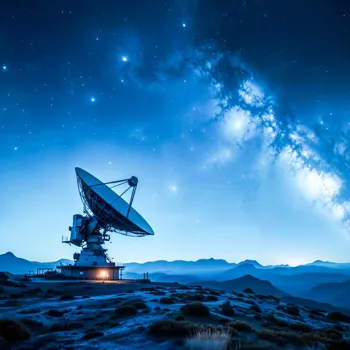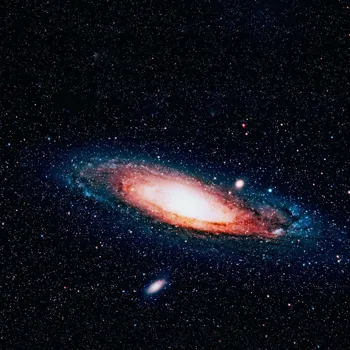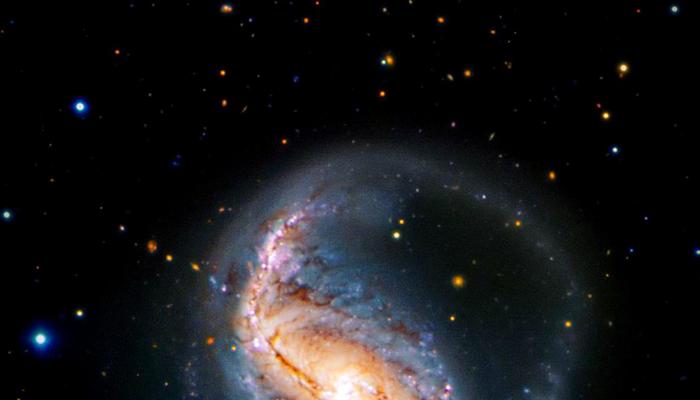Delve into Astrophysics: Unlocking the Mysteries of the Cosmos! Explore stars, galaxies, and the universe's enigmatic beginnings
The universe, a vast and awe-inspiring expanse, has captivated humanity for
centuries. From ancient stargazers to modern-day scientists, we have always looked up at the night sky, wondering about our place in this cosmic tapestry.

Astrophysics, the branch of physics that studies celestial objects and phenomena, plays a pivotal role in our quest to decipher the universe's mysteries. It helps us understand the birth, life, and death of stars, the formation of galaxies, and the very origins of the cosmos.
Through sophisticated tools and theoretical models, astrophysicists are constantly pushing the boundaries of our knowledge, revealing the hidden secrets of space and time.
The study of astrophysics is not just about understanding the universe; it's about understanding ourselves and our connection to the grand cosmic scheme.
Astrophysics tools probe universe, analyze light, particles, simulate processes for cosmic understanding
Astrophysics employs a wide array of tools and techniques to probe the universe. Telescopes, both ground-based and space-based, are essential for collecting light and other forms of electromagnetic radiation from distant objects.

Spectrographs analyze the light to determine the chemical composition, temperature, and velocity of celestial bodies. Particle detectors, like those at the Large Hadron Collider, help us understand the fundamental particles that make up the universe.
Theoretical models, based on the laws of physics, are used to simulate astrophysical processes and predict their outcomes. By combining observations with theory, astrophysicists can piece together a comprehensive picture of the cosmos.
This collaborative effort allows us to explore phenomena far beyond our reach.
Astrophysics reveals star life cycles from birth to death
One of the most significant contributions of astrophysics is our understanding of the life cycle of stars. Stars, like our Sun, are born in giant clouds of gas and dust. Gravity causes these clouds to collapse, forming dense cores that eventually ignite nuclear fusion at their centers.

This fusion process, where hydrogen atoms are converted into helium, releases enormous amounts of energy, making the star shine brightly. As stars age, they exhaust their fuel and evolve into different types of objects, such as red giants, white dwarfs, or neutron stars.
Massive stars can even end their lives in spectacular supernova explosions, leaving behind black holes. By studying stars at different stages of their lives, astrophysicists can reconstruct their evolutionary paths and gain insights into the processes that govern their formation and death.
Astrophysics studies galaxy formation, evolution through simulations, insights into cosmos
Astrophysics also plays a crucial role in understanding the formation and evolution of galaxies. Galaxies are vast collections of stars, gas, dust, and dark matter, held together by gravity. Our own galaxy, the Milky Way, is a spiral galaxy containing hundreds of billions of stars.

Galaxies come in various shapes and sizes, from spiral galaxies to elliptical galaxies to irregular galaxies. Astrophysicists study the distribution of galaxies in the universe, their interactions, and the processes that drive their evolution.
They use computer simulations to model the formation of galaxies from small density fluctuations in the early universe. These simulations help us understand how galaxies grow and evolve over billions of years. The study of galaxies provides insights into the large-scale structure of the cosmos.
Cosmology studies universe's origin, evolution, and dark energy's role
The study of cosmology, a branch of astrophysics, addresses the origin, evolution, and ultimate fate of the universe. The prevailing cosmological model, the Big Bang theory, states that the universe began about 13.8 billion years ago in an extremely hot and dense state.
Since then, the universe has been expanding and cooling. Astrophysicists study the cosmic microwave background radiation, the afterglow of the Big Bang, to probe the conditions in the early universe.
They also study the distribution of galaxies and the expansion rate of the universe to understand the nature of dark energy, a mysterious force that is accelerating the expansion of the universe.
Cosmology is pushing the boundaries of our knowledge, exploring the fundamental questions about our existence.
Astrophysics impacts technology, inspires curiosity, and deepens understanding of the cosmos
Astrophysics has far-reaching implications beyond the realm of pure science. The technologies developed for astrophysical research, such as advanced imaging techniques and data analysis methods, have found applications in various fields, including medicine, engineering, and computer science.
The study of astrophysics inspires curiosity and a sense of wonder about the universe, which can lead to increased interest in science and technology among young people.
Furthermore, astrophysics helps us understand our place in the cosmos and the fragility of our planet, promoting a sense of responsibility towards protecting our environment.
By unraveling the universe's mysteries, astrophysics enriches our understanding of the world around us and inspires us to reach for the stars. Studying astrophysics not only helps us understand the origins of the universe, but also our very existence.













